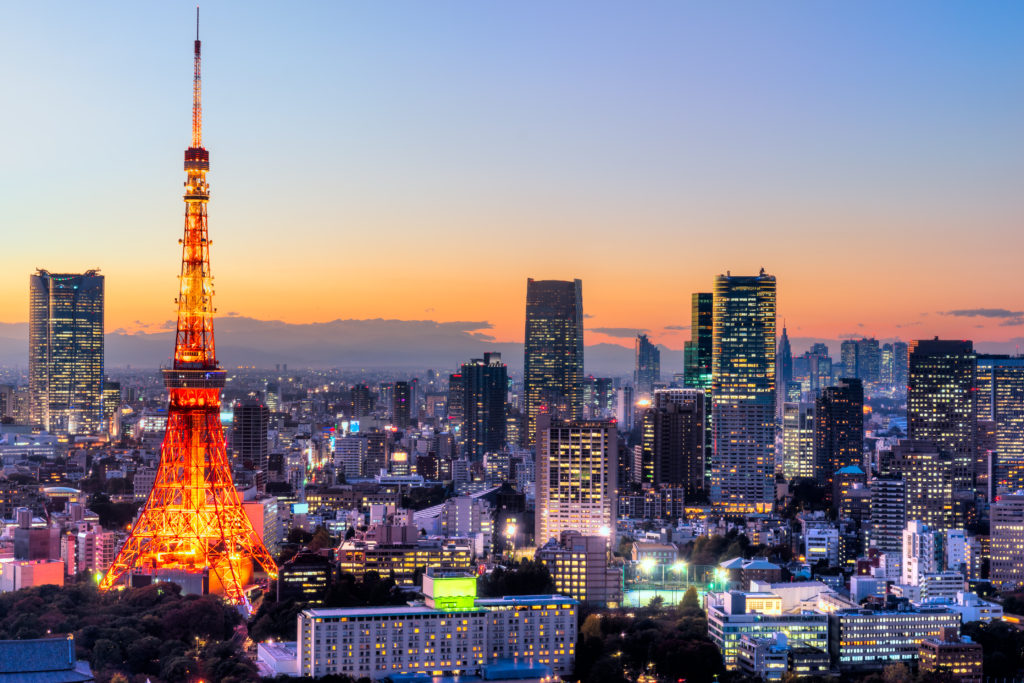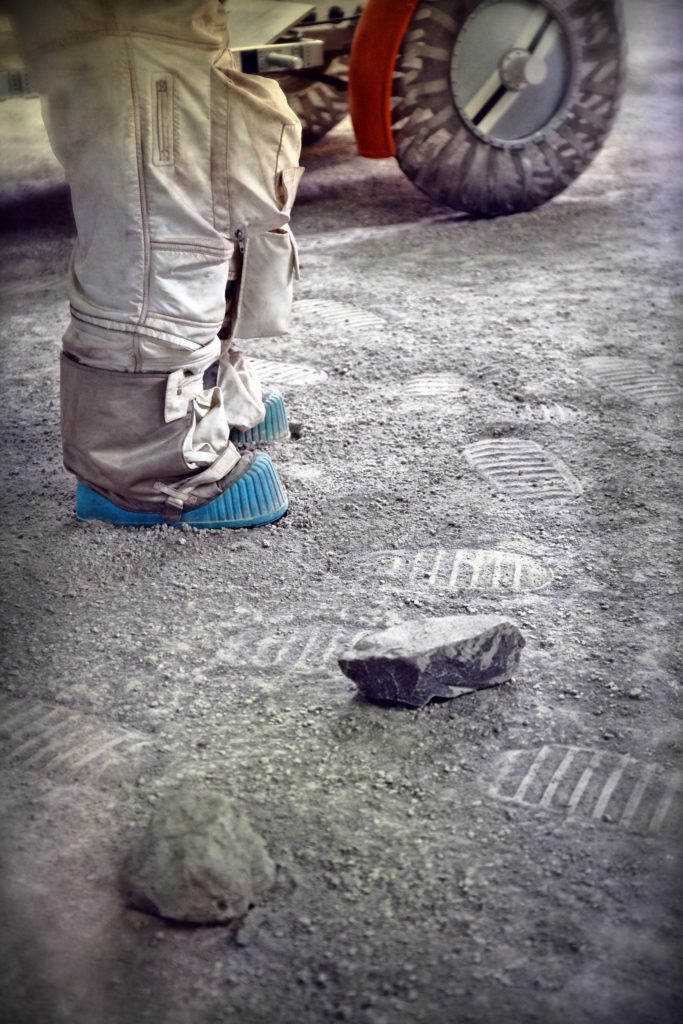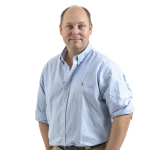More courage for beacons – making innovations visible
Without courage and vision, Paris would not have had its Eiffel Tower, nor would mankind have had the moon landing. Today, visionaries are working on the world’s largest WLAN network, or rocket-propelled fast trains. We don’t just need innovative ideas, but more importantly the courage to tackle visionary projects. This is because, with their illuminating power and direction-giving strength, they are able to show us the way and spur us on to create a better future.

To begin with, it was mocked, and worse, spurned as a useless eyesore. As the 19th century drew to a close, the Eiffel Tower was initially a monstrous construction. Virtually nobody could have imagined that the iron construction would one day reach for the sky as the emblem of France, today, in the age of digitisation, every now and again in the LED colours of the French tricolour.
The tallest tower in the world at the time, it arguably played a major role in making France the most-visited country in the world, with over 80 million foreign tourists a year, and making Paris a major travel destination, to at least see the Eiffel Tower for oneself once.
Visionary projects that lead the way
The tower has long since been more than just a tourist attraction: in fact, it is the most famous landmark in the world. Even during the horrendous terrorist attacks on the satirical magazine “Charlie Hebdo”, it demonstrated its power yet again as, with just a few strokes by French artist Jean Jullien, it became fused with the peace symbol to represent an emblem of mourning and an icon of solidarity with the victims of the attacks. It rapidly spread to social media networks around the world and then developed a life of its own.
The tower is a beacon, and not just since it was equipped with modern lighting technology. Unique and largely visible – these are the characteristics that can turn constructions and innovative achievements in general into something truly exceptional, into something huge, which casts light on new opportunities, inspires enthusiasm and gives a city, a region, or a country a tremendous boost.
Not just in the world’s major cities, but even right outside our own front doors, visionary projects are realised all the time that have illuminating properties. You have to think big and aim high. Without it, Baden-Wuerttemberg’s tallest tower would not have been built in Rottweil. It is higher than the TV tower in Stuttgart and has a viewing platform that is second to none across the whole of Germany. It is here that, in 2017, high-speed lifts and the first cable-free lift system in the world will be tested.
Courage to explore new dimensions
Visions are needed to create new things, to allow progress and to allow the future to be shaped. Visions, and a lot of courage. Otherwise, Neil Armstrong would never have been able to set foot on the powdery soil of the moon. One small step, but a giant leap for mankind.
The first moon landing was more than a media event that thrilled TV audiences of 500 million almost half a century ago. It represents a milestone in human history and drives us to continue coming up with new visions. No matter what others think. As Barack Obama said on the death of the space travel pioneer four years ago, Armstrong and his crew showed in 1969 that, with enough drive and ingenuity, anything is possible.

What would France be without the Eiffel Tower? Where would we be without the moon landing?
The landing on the moon catapulted mankind into new dimensions. That’s not something you achieve every day. But changing, improving the place we live in, taking that step towards the future – we should never stop working on that. The signal effect of beacons or lighthouse projects is crucial in this context, which is why we call them that for good reason. Especially when we are talking not about architectural accomplishments, but rather about environmental protection, business, science and technology, sustainable development, sports, education or culture, health promotion or integration.
Lighthouse projects must also encourage others to act, said UN Secretary General Ban Ki Moon, as he presented initiatives for climate protection with the “Momentum of Change Award” at the last UN climate conference in Paris.
Never before have changes occurred so quickly than in this day and age: social change, digitisation, globalisation and climate change. The challenges are increasingly complex, calling for joint action and new solutions. So this is precisely why we need new lighthouse projects – initiated by central stakeholders from the worlds of politics, business or even science.
Sometimes, we promise ourselves a civil push, sometimes technological progress – but always a future-focused impulse and a change for the better.
Concepts for the city of tomorrow
The signal effect often manifests itself through superlatives. Thus even telephone booths from the pre-digital age can become beacons when they are converted by Google’s subsidiary Sidewalk Labs into WLAN hotspots, creating the largest and fastest urban WLAN network in the world. In New York City, for example, users within a radius of 50 metres can log in free of charge and surf the Internet at speeds of up to one Gigabit per second. Impressive.
This is about the city of tomorrow, the networked life of the future that not only Google is working on, but also other companies and groups from a wide range of industries. Innovation drivers such as Tesla, for example, are sounding out how we will travel around in future. The mobility pioneer is driving the development of E-cars, developing a fast train connection in California with the solar-powered Hyperloop system, capable of reaching speeds of up to 700 miles per hour (approx. 1,225 km/h), and pushing to establish tourism to the moon as the new holiday destination for package tourists with its Space X programme.
A wealth of innovative ideas and ventures are also coming from start-up companies. The scene is buzzing in Berlin, Paris, London, Tel Aviv and of course in America’s centres of innovation.
It is vital to support young companies that are pursuing ambitious goals, but do not have the staying power of major companies. It is essential to encourage innovations and initiatives and turn the best ideas into lighthouse projects that are impossible not to notice and that reach many people. This was precisely my intention when I founded the CODE_n innovation platform five years ago.
A festival for technologies and innovations – dedicated to the future
When we launched the idea in 2011, nobody imagined what dimensions it would eventually take on. After all, what started out as an event with an international start-up competition has now evolved into a global ecosystem. A network that brings together founders, science, business, politics, art and technology.
In 2012, the goal was finally reached: at the world’s largest IT trade fair, the CeBIT in Hanover, 50 up-and-coming start-up companies presented their ideas and visions in the CODE_n exhibition hall, with many of them being revealed to the public for the first time, and among them our first winner, MyTaxi. At the time, it was an unknown, young company – and today it is the name on everyone’s lips. We filled the vision with life, creating a beacon. Every year, more and more visitors have come to our exhibition hall, more than 75,000 in 2015. But the work won’t stop: last year, we opened our first innovation campus in Stuttgart, complemented by an online network and flanked by numerous smaller events.
Without this vision, this development would never have been possible. But even a beacon has to grow with the changing times, it cannot stay in its original state. Just like the Eiffel Tower now shines with colourful LED lights, we have also taken our beacon to the next level in 2016: farewell CeBIT, hello Innovation Festival. From 20th to 22nd September 2016, the new.New Festival will be held at the Centre for Art and Media (ZKM) in Karlsruhe under the motto “Unveiling Digital Disruption” – with a host of new as well as familiar elements. Independent and vibrant, in a unique cultural institution. To continue generating stimulus and inspiring participants, start-ups, technologies and first-class speakers will be joined most importantly by future trends, but also art and culture.
And this is exactly what the new.New Festival is about: inspiration and enthusiasm for all things new. We need more of these beacons in Germany in order to take away people’s fear of change and to inspire them about our future. A holiday on the moon – a long way off, yet so close.
Let’s not forget that we are continuously experiencing change in almost every aspect of our lives. And we are able to control ourselves what happens next.
So how do we want to live in the future?
Let’s build beacons together.
Read the first part of the innovation series by Ulrich Dietz.
(1) The structure of the Tokyo-Tower in Japan is an Eiffel Tower-inspired lattice tower.





